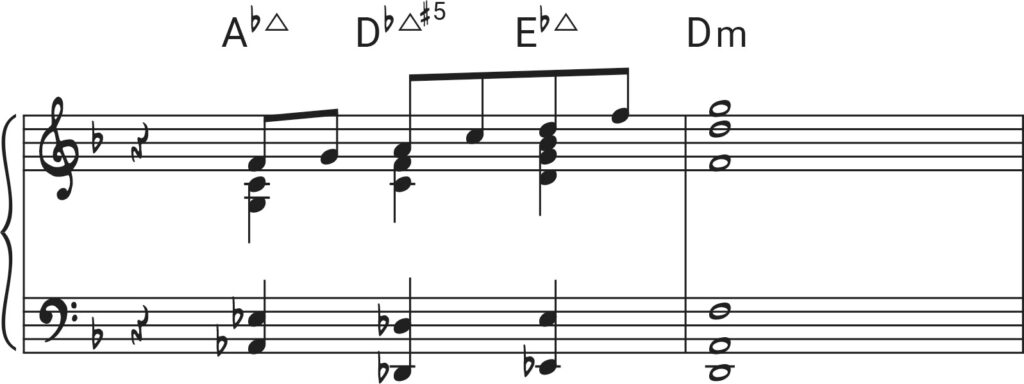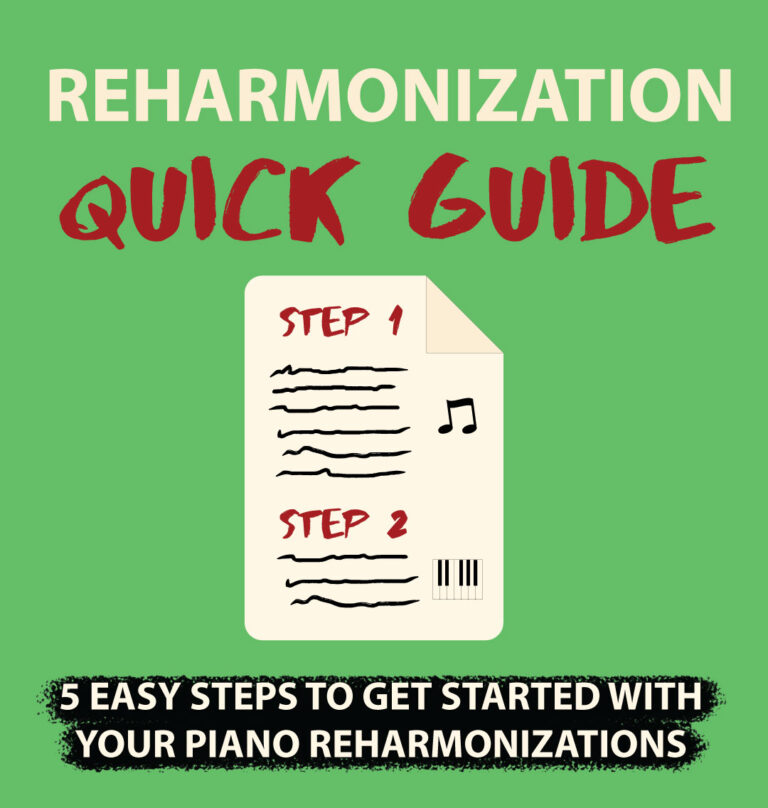“In a Sentimental Mood” remains one of my favorite Duke Ellington compositions. An absolutely magical version is his famous recording featuring John Coltrane. The haunting melody, spaciously played on top of Duke’s melancholic piano riff gives me goosebumps every time.
In this blog post, I’ll be showing you how I reharmonized this great tune in 4 steps. But first, let’s bring magic to life by listening to the Duke’s and Coltrane’s version:
The original version, recorded in 1935, the same year Ellington composed the piece, has an iconic chromatic bass line at the top. We’ll use this later on in our reharmonization:
Reharmonizing "In a Sentimental Mood"
Let’s get started! I’ve split up the process of reharmonizing “In a Sentimental Mood” in 4 steps:
Step 1: Melody with Basic Chords
Let’s start with the backbone of the tune, and play the melody with basic chords, sticking to the original chromatic bass line that descends from D to B:

Step 2: A New Chromatic Bass Line
Piggybacking off Ellington’s original chromatic idea, let’s try to introduce a different chromatic bass progression. You can experiment with different starting notes, and then see if you can come up with any chord changes that fit both the melody and the new bass line. I came up with a bass line starting on a B, chromatically going down to A. For each of these bass notes, I’ve harmonized it with fitting chords: Bø, Bbm6 , and Dm/A:

Step 3: Venturing Outside the Key
Reharmonizing often means challenging the boundaries of the existing harmonies. A great way to do this is by looking for some unconventional major chords. While “In a Sentimental Mood” is in the key of F major (or D minor), I incorporated three major chords that diverge from this key: Ab major, Db major, and Eb major. These chords bring a new color to the opening melody, creating both a surprising contrast and some warmth from its major 7th sonority:

Step 4: Infusing Secondary Dominants and Tritone Substitute Chords
Next, I added in secondary dominants, secondary, ii – Vs, and tritone substitute chords (check out this blog post on how to create them). These elements introduce tension and resolution throughout the piece and can help propel your harmonies forward, as well as add color and movement:

Final Version of "In a Sentimental Mood", Reharmonized
With these 4 steps, you can completely revamp an existing composition and make it your own. In my final version, I’ve used additional chromatic bass lines (for example, in the repeat of the melody, I’m going chromatically up from G to A), many more secondary dominant chords, as well as some fills and embellishments.
Finally, you can add in an intro and outro.
As a bonus, I’ve hidden two more references to Ellington pieces in this arrangement. Can you find them?
Conclusion
Reharmonizing a classic, especially one as timeless as “In a Sentimental Mood,” is a challenge, but I find it an extremely fun and inspiring process — I hope you do too!
Let’s keep the conversation going—share your thoughts in the comments below and, if you’ve caught those Ellington easter eggs, don’t be shy!
To get more tutorials, reharmonizations, and piano insights directly in your inbox, be sure to sign up for my mailing list and get a free copy of my Reharmonization Quick Guide.
Happy reharmonizing!

